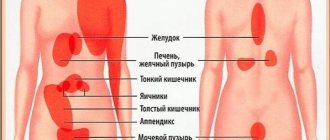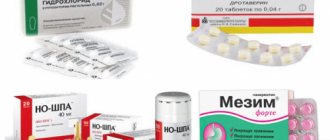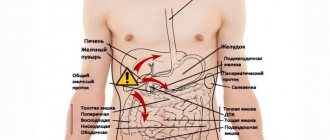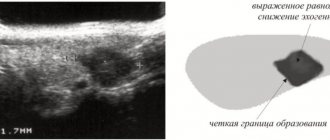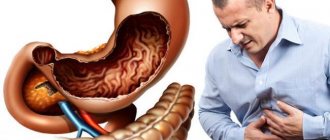The article was prepared by a specialist for informational purposes only. We urge you not to self-medicate. When the first symptoms appear, consult a doctor.
One of the common complaints is pain in the right side. It can manifest itself in different ways, being stabbing, sharp, aching or pulling. There are many reasons that can provoke painful sensations. These include chronic diseases of the digestive system, such as Crohn's disease, acute surgical pathologies, such as appendicitis, as well as hernias, malignant neoplasms and more. Pain in the right side in women is often caused by pathologies of the reproductive system.
Depending on the disease, the nature of the pain will differ. Each pathology provides a specific set of signs that can be used to make a preliminary diagnosis. The main thing is to interpret them correctly. Our article will help you understand this difficult issue.
Features of pain syndrome
Additional signs will help determine the cause of pain in the right side. Depending on the intensity and nature of the sensations, pain can be:
- Acute, with a sharp onset and high intensity. Possible causes: cholelithiasis, hepatic colic.
- Dull, with gradual intensification, persists over a long period of time. The most common cause: chronic diseases of the digestive system.
- Mild aching pain. Possible causes: chronic inflammation of the intestinal wall or gallbladder.
- The pain is like contractions, then gains strength, then gradually weakens. The most common cause: intestinal spasm.
In diagnosing the causes of pain in the right side, its concentration is important:
- Under the ribs: a signal about disturbances in the functioning of the gallbladder and liver.
- In the center of the abdomen with irradiation to the right side: colitis.
- In the lower abdomen on the right: appendicitis, inflammation of the ovaries or appendages (in women), strangulated inguinal hernia (in men), typhlitis.
- In the umbilical region with shooting in the right side: enteritis.
- In the right side behind: pleurisy of the lower part of the lungs, liver abscess.
The location of pain and its intensity are not always 100% a symptom of a particular disease. Only a doctor can make an accurate diagnosis, which will require instrumental examination methods and tests.
Which doctor should I contact?
If you experience pain in the lower back, it is recommended to consult a doctor as soon as possible. You should not self-medicate, since the cause may be one or more diseases, and only a specialist can make the correct diagnosis, as well as offer a competent and effective treatment plan. If you do not have chronic diseases and do not know about the possible causes of pain, then first you should consult a therapist
, who will give recommendations and refer you to other doctors:
gynecologist
,
urologist
,
neurologist
, etc.
Causes of pain in the right side
If a person experiences pain in the right side, there is no need to panic, since the most common cause of discomfort is physiological factors. Pain can be a consequence of fast walking, running, or excessive physical activity. It occurs due to redistribution of blood flow and accumulation of blood in the liver. Discomfort may appear both during training and after its completion.
People describe the pain as sharp and note that they have a “stabbing sensation in the side.” In this case, the person automatically grabs the problem area and stops training. If the pain is truly caused by an overload of the body, it is enough to rest for a few minutes for your health to return to normal.
[Video] Traditional Chinese medicine specialist Tatyana Panyushkina will tell you about pain in the right side and what you need to do:
In addition to physical overload, pain in the right side can be caused by factors such as:
- Press pumping. Pain occurs during intense exercise performed by people without proper physical training. It can last up to 3 days and will intensify when turning the body, tension in the peritoneum, for example, when coughing or straining.
- Hypothermia, being in a draft. Discomfort is concentrated in the right side and radiates to the lumbar region. Increased discomfort occurs with careless body movements.
- Injuries. The stronger the blow, the more intense the pain and the more dangerous the consequences. If you have severe pain, you should seek medical help immediately, as there is a risk of serious damage to your liver or gallbladder.
- Errors in nutrition. Fried and fatty foods can provoke a painful attack. This is especially true for patients suffering from hepatitis or gallstone disease.
If physiological causes of pain are excluded, you need to consult a doctor to clarify its origin.
Diseases of the intestines and pancreas
- Appendicitis. Inflammation of the appendix provokes intense pain in the right iliac region, which radiates to the upper abdomen. It occurs suddenly, without any provoking factors. Lying on your side with your knees pulled up to your stomach helps you feel better. The pain may be cramping or constant. Additional signs of appendicitis: fever, weakness, flatulence, diarrhea.
- Appendicular infiltrate. This is an inflammatory tumor, which includes the appendix itself, as well as the cecum and omentum. This infiltrate is a complication of acute appendicitis. In this case, the pain is aching in nature, it persists for several weeks, intensifies when turning the body and bending over. Indirect signs confirming the pathology: the presence of a space-occupying formation in the right side, when pressed, the pain intensifies.
- Mesadenitis. When the lymph nodes of the mesentery of the small intestine are inflamed, pain occurs unexpectedly for a person, it is cramping and persists for several days. Strengthening occurs when coughing and changing body position. Additional signs: high fever, diarrhea and nausea, thirst.
- Enteritis. With inflammation of the mucous membrane of the small intestine, the pain is concentrated in the right side, closer to the bottom. It can occur as attacks or bother a person on an ongoing basis. Additional signs of enteritis: rumbling in the stomach, bloating, diarrhea.
- Inguinal hernia. The pain is acute, concentrated in the right side and groin area. It bothers the patient when the abdominal wall is tense and when lifting heavy objects. Shooting into the lower limb is possible. Additional signs: a protrusion in the lower right abdomen that disappears when the person lies down.
- Pancreatitis. When the pancreas is inflamed, the pain is girdling and severe. It radiates to a greater extent to the right side if the head of the organ is affected. Additional signs: dark urine, light stools, vomiting, itchy skin.
- Crohn's disease. With this disease, terminal ileitis is most often affected, so the pain is concentrated in the lower right side. It gains strength during the period of exacerbation, and as the inflammatory process subsides, it becomes aching and causes discomfort. Additional signs: diarrhea, increased gas formation, blood in the stool, weight loss.
- Intestinal tumors. Intense pain in the right side occurs when cancer affects the ascending colon and cecum. The pain is present on a constant basis, and as the disease progresses, it turns into painful spasms. Additional signs: lack of appetite, weight loss, blood in the stool.
Parasitic infestations and intestinal infections
- Salmonellosis. With this intestinal infection, the pain is sharp and localized in the right side and upper abdomen. It gets stronger when trying to have a bowel movement. Additional signs: diarrhea, foul odor, and green stool.
- Helminthiases. Parasites that live in the human intestines cause dull pain in the right side, which occurs like an attack. They intensify in the evening and at night. Additional signs: bloating, constipation and diarrhea; as the number of helminths increases, asthenia becomes stronger.
Diseases of the liver and biliary tract
- Hepatitis. With acute or chronic inflammation of the liver, a person will experience pain in the right side, which is localized under the ribs. Additional symptoms: itching, low-grade fever, yellowing of the skin and sclera, loss of appetite, weakness.
- Dyskinesia of the bile ducts. If bile cannot enter the intestines, then the person will experience aching pain in the right side. After breaking the diet, heaviness often occurs in the right hypochondrium. The pain may radiate to the umbilical area. If the walls of the gallbladder are overly tense, the discomfort increases. In intensity, such pain can be compared to biliary colic. Additional signs: nausea and weakness, previously diagnosed cholecystitis.
- Cholelithiasis. When stones form, a person is bothered by aching pain in the right side, which radiates to the scapula. An attack can be triggered by stress, abuse of fatty and fried foods, and vibrations. Additional symptoms: biliary colic, during which a person experiences excruciating pain, accompanied by nausea and vomiting.
- Cholecystitis. With inflammation of the gallbladder, the pain is concentrated in the right hypochondrium. It feels similar to the one that haunts people with gallstone disease, but less intense. Additional signs: reflux esophagitis with a bitter taste in the mouth, nausea, itching.
[Video] Gastroenterologist Alexander Yuryevich Kovchun - do you think the liver hurts on the right? Is not a fact…
Diseases of the stomach and duodenum
- Gastritis. Pain due to inflammation of the stomach is not present on a constant basis. It is concentrated in the upper abdomen in the center and radiates to the right side, to the hypochondrium. Additional signs: pain occurs in the morning on an empty stomach, or 2 hours after eating, appetite is reduced, there is belching with acidic contents thrown into the oral cavity. Patients complain of constipation, which may be followed by diarrhea.
- Duodenitis. With inflammation of the duodenal mucosa, the pain is always aching and concentrated in the area of the right hypochondrium. It can spread to the back and shoulder blade, and sometimes surrounds the entire body. Additional signs: heartburn, nausea, vomiting, bitter taste in the mouth, increased sweating, diarrhea.
- Ulcerative lesion of the duodenum. When an ulcer forms, the pain is concentrated in the right side, in the upper abdomen. It occurs from time to time; when the ulcer heals, the pain is absent or becomes barely noticeable. Additional signs: nausea, vomiting, belching, constipation, dyspepsia.
- Diaphragmatic hernia. When the abdominal organs are transposed through a hole in the diaphragm, a person experiences girdle pain that radiates to the right side. Their character is dull, they intensify after eating. Additional signs: rumbling in the chest, flatulence, belching, breathing problems.
Diseases of the urinary system
- Pyelonephritis. When kidney inflammation is caused by infectious agents, a person experiences severe pain. If the lesion is unilateral and the right kidney is involved in the pathological process, then the pain will be concentrated in the right side, closer to the lower back. Additional signs: low-grade fever in the evening, pain when urinating, swelling of the face, vomiting, headache, change in the color and smell of urine.
- Glomerulonephritis. With this autoimmune process, both sides and lower back will hurt. Additional signs: hyperthermia, red urine color, increased blood pressure, swelling, shortness of breath.
- Stones in the kidneys. When stones form, the pain is dull, aching, concentrated in the lumbar region, and can radiate to the right side. It becomes very strong as the stone moves through the ureters, and hepatic colic develops. Additional signs: frequent urge to empty the bladder, the appearance of blood in the urine. The pain intensifies with physical activity.
Diseases of the female reproductive system
- Inflammation of the ovaries and fallopian tubes. The pain is sharp, concentrated in the right side, radiating to the perineum. Additional signs: menstrual irregularities, increased pain after hypothermia, overwork and before menstruation.
- Cyst on the ovary. If the right ovary is affected, the pain is localized in the right side. The more education, the stronger they are. Additional signs: pain intensifies during training, when bending the body, during intimacy.
- Endometriosis. Pain in the right side appears when the ovaries and tubes are affected on the corresponding side. Since the process is chronic, discomfort is present on an ongoing basis. Additional signs: pain radiates to the pubic area, becomes spasmodic during menstruation.
- Ectopic pregnancy, cyst rupture. These conditions are considered emergencies and require immediate medical attention. The pain is sudden, proceeds like contractions, radiates to the perineum, to the anus and to the sacrum.
For any diseases of the female reproductive system, there is a clear connection between increased pain intensity and the menstrual cycle. Discomfort may also occur during sexual intercourse.
Ways to restore the liver
Drug treatment includes the prescription of hepatoprotectors - a type of drug that restores liver cells and has a beneficial effect on the functioning of the organ. In addition, medications may be prescribed to suppress nausea and vomiting. Physiotherapy and dosed physical therapy are used in the treatment of liver diseases.
Traditional methods of treating the liver
Among folk remedies, a decoction of oats is useful, as well as all kinds of herbal infusions.
Norman Walker's method is gaining popularity, in which you need to drink freshly squeezed vegetable juices every day. Preferably at least one liter per day.
Healthy foods for the liver
If you have a diseased liver, you should follow a diet that excludes fatty and fried foods; bread and other baked goods; vegetables and fruits that cause bloating; spicy dishes; sweets; alcoholic drinks.
Eating the following foods is beneficial:
- Various cereals;
- Fish;
- Milk, fermented milk products: kefir, cottage cheese;
- Lean meat: rabbit, turkey. Including soups made from them.
If liver function is not restored by the above methods, surgical intervention involving organ transplantation is required.
Diagnostics
Before referring a patient for instrumental diagnostics and prescribing tests, he must be examined and interviewed.
During these activities, the following points are clarified:
- Features of the pain syndrome.
- The focus of pain and the area of its distribution.
- Collection of general anamnesis.
- Patient complaints upon palpation or worsening attack.
- Additional symptoms.
- Taking medications for other diseases.
After clarifying all the questions of interest, the doctor will refer the patient for examination. Depending on the preliminary diagnosis, certain studies may be prescribed:
- Radiography. If the doctor suspects that the intestines are affected, he recommends irrigoscopy with the introduction of a contrast agent. This study allows you to identify ulcers, pathological narrowing or expansion of areas of the intestine, and its tumors.
- CT scan of the abdomen.
- Colonoscopy. This method allows you to visualize the large intestine from the inside.
- Video capsule endoscopy. This is a modern diagnostic method with which you can assess the condition of the gastrointestinal tract without discomfort for the patient.
- Examination by a gynecologist. Women with complaints of pain in the right side should visit a gynecologist and undergo an examination in a chair using mirrors. If necessary, an ultrasound of the pelvic organs will be prescribed. Sometimes hysteroscopy is required to clarify the diagnosis.
- MRI. This method allows you to exclude neoplasms and detect hernias.
A prerequisite is the submission of biological materials for analysis. Blood and urine are taken for general examination, a coprogram is performed, and feces are checked to detect parasite eggs. It is possible to donate blood for biochemical analysis and other precise laboratory tests.
Diagnostic methods
To make a correct diagnosis, doctors use a standard algorithm for diagnosing existing diseases.
Its stages involve performing sequential actions:
- Carry out an external examination of the patient’s condition (measure temperature, blood pressure, assess the condition of the skin, and so on).
- Collect information about the patient’s feelings and complaints.
- Choose one of the additional methods of hardware visualization of the condition of the patient’s internal organs.
In modern medical practice, the most commonly used are:
| Type of study | Brief description of the purpose |
| Ultrasound examinations (ultrasound) | They are used to diagnose the condition of the organs of the female and male reproductive system, as well as the intestines. |
| Magnetic resonance imaging (MRI) | Helps identify the presence of neoplasms and changes in the bone and joint systems of the body. |
| X-ray | Used to assess the condition of internal organs when previously used research methods are ineffective. |
Treatment
If the cause of pain in the side is physiological factors, for example, intense training or a draft, then treatment is not required. After 2-3 days, the discomfort will go away on its own. However, this does not always happen. When discomfort persists for 5 days or more, other symptoms appear, or your health worsens, you should consult a specialist. The only medications that can be used before diagnosis, but after consultation with a specialist, are painkillers designed to make you feel better.
For spasms, antispasmodics and muscle relaxants are used; for inflammation, drugs from the NSAID group are used. To quickly relieve pain, blockades can be installed. All of these methods will not get rid of the cause that caused the pain in the side; they only reduce it.
For intestinal infections, antiviral agents and antibiotics are used, after which drugs are prescribed to restore the microflora. Infusion solutions are used to relieve intoxication and normalize water balance.
Severe Crohn's disease requires correction of the immune status, using cytostatics that suppress the intensity of inflammation. Similar drugs are used for cancerous tumors.
If the disease is accompanied by disturbances in the gastrointestinal tract, gallbladder, or pancreas, anti-diarrhea medications or laxatives are prescribed to normalize stool. Enzymes are used for better digestion of food.
Since any disease wears out the body’s reserves, vitamins and minerals are used to maintain them. Physiotherapeutic methods serve as auxiliary therapy.
Surgery is the only option for helping patients with appendicitis, ectopic pregnancy, strangulated hernia, or ovarian rupture. Sometimes the help of a surgeon is required for people with Crohn's disease when fistulas and abscesses form in the intestines.
Elective surgical interventions are performed for endometriosis. In most cases, patients with cancerous tumors are sent for surgery.

